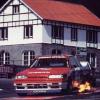Advice Urgent Guys. Cp Clearances
Announcements
-
Similar Content
-
Latest Posts
-
By TurboTapin · Posted
I'm not certain of your capabilities but parts and labour of a 2.8 will be well above 15k. You could do things slowly though (I.E Buy parts, save up, build block, save up, build head, etc.) As mentioned, go single turbo. -
By GabsReDeal · Posted
Will ask the exhaust shop about this and get a quote if possible. My current pipe is with flanges and not welded on, so I can easily switch to my old cat if I wanted. I'd do it that way too. This shouldn't be an issue as long as there are no exhaust leaks afaik. Stock one was with flanges as well. -
If you go 2.8, you're going to want bigger turbos. Scratch that. If you go 2.8, you're going to want one single larger turbo.
-







Recommended Posts
Create an account or sign in to comment
You need to be a member in order to leave a comment
Create an account
Sign up for a new account in our community. It's easy!
Register a new accountSign in
Already have an account? Sign in here.
Sign In Now